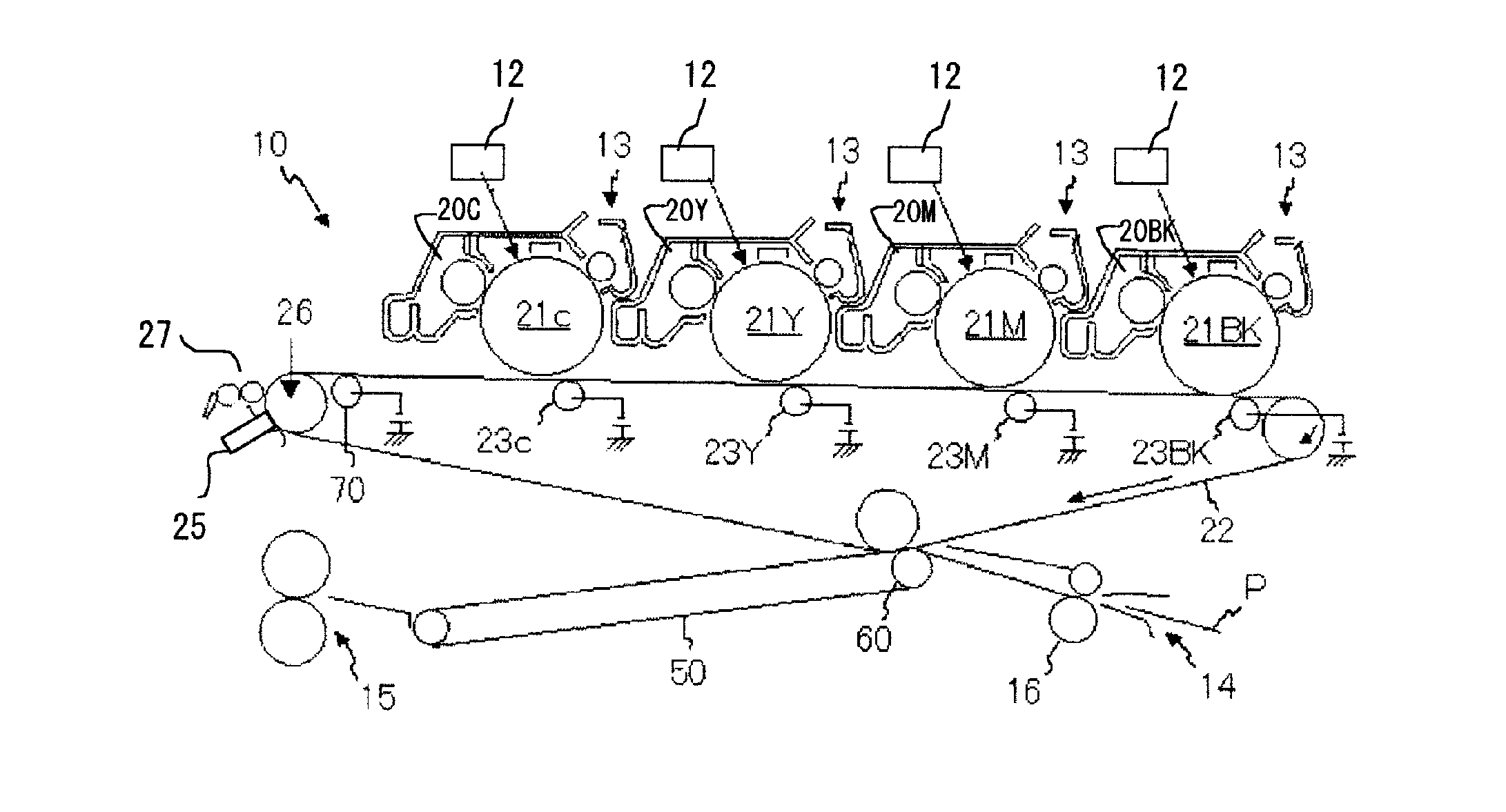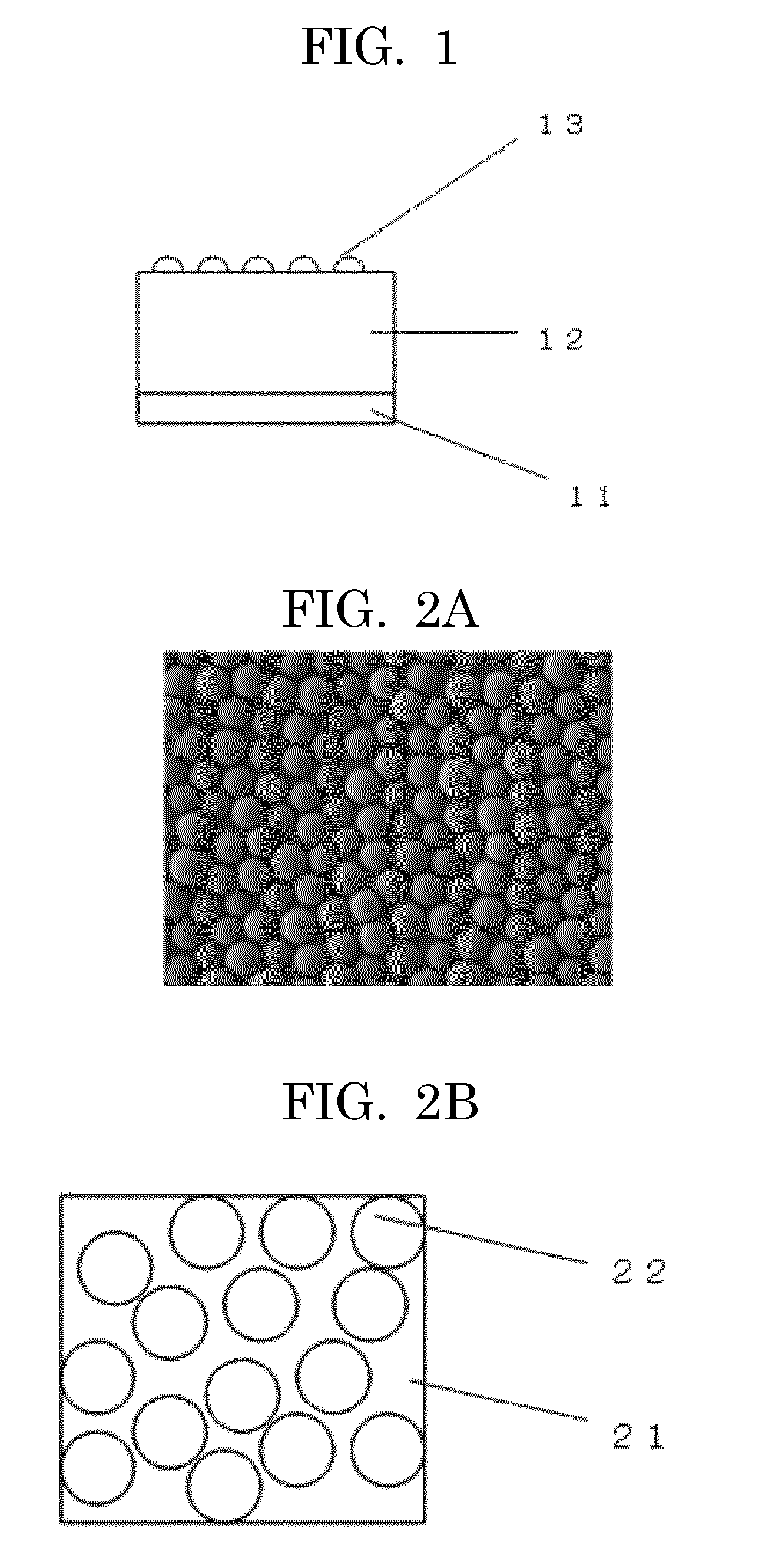Intermediate transfer belt, method for producing the same, and image forming apparatus
a transfer belt and transfer method technology, applied in the direction of electrographic process equipment, printing, instruments, etc., can solve the problems of inability to achieve accurate registration, slow printing speed, and out-of-color registration, and achieve the effect of high transferability and high durability
- Summary
- Abstract
- Description
- Claims
- Application Information
AI Technical Summary
Benefits of technology
Problems solved by technology
Method used
Image
Examples
example 1
[0205]A base layer-coating liquid was prepared as follows, and was used to produce a base layer of a seamless belt.
[0206]First, carbon black (SPECIAL BLACK 4, product of Evonik Degussa) was dispersed in N-methyl-2-pyrrolidone with a bead mill. The resultant dispersion liquid was added to polyimide varnish mainly containing a polyimide resin precursor (U-VARNISH A, product of UBE INDUSTRIES, LTD.) so that the carbon black content was adjusted to 17% by mass of the solid content of polyamic acid, followed by thoroughly stirring and mixing, to thereby prepare a coating liquid.
[Production of Seamless Belt]
[0207]Next, a metal cylinder (outer diameter: 100 mm, length: 300 mm) was subjected to blast treatment so as to have a rough surface, and then used as a mold. While the resultant cylindrical mold was being rotated at 50 rpm, the above base layer-coating liquid was uniformly flow-cast onto the outer surface of the cylindrical mold using a dispenser. At the point when all of a predetermi...
example 2
[0216]The procedure of Example 1 was repeated, except that the spherical resin particles were changed to silicone resin particles (X-52-854, volume average particle diameter: 0.8 μm, product of Shin-Etsu Chemical Co., Ltd.), to thereby produce intermediate transfer belt B.
[0217]From an electron microscopic cross-sectional image of the produced belt, the embedment rate of the particles in the resin layer was found to be 53%.
example 3
[0218]The procedure of Example 1 was repeated, except that the spherical resin particles were changed to silicone resin particles (TOSPEARL 120, volume average particle diameter: 2.0 μm, product of Momentive Performance Materials Inc.), to thereby produce intermediate transfer belt C.
[0219]From an electron microscopic cross-sectional image of the produced belt, the embedment rate of the particles in the resin layer was found to be 75%.
PUM
 Login to View More
Login to View More Abstract
Description
Claims
Application Information
 Login to View More
Login to View More - R&D
- Intellectual Property
- Life Sciences
- Materials
- Tech Scout
- Unparalleled Data Quality
- Higher Quality Content
- 60% Fewer Hallucinations
Browse by: Latest US Patents, China's latest patents, Technical Efficacy Thesaurus, Application Domain, Technology Topic, Popular Technical Reports.
© 2025 PatSnap. All rights reserved.Legal|Privacy policy|Modern Slavery Act Transparency Statement|Sitemap|About US| Contact US: help@patsnap.com



